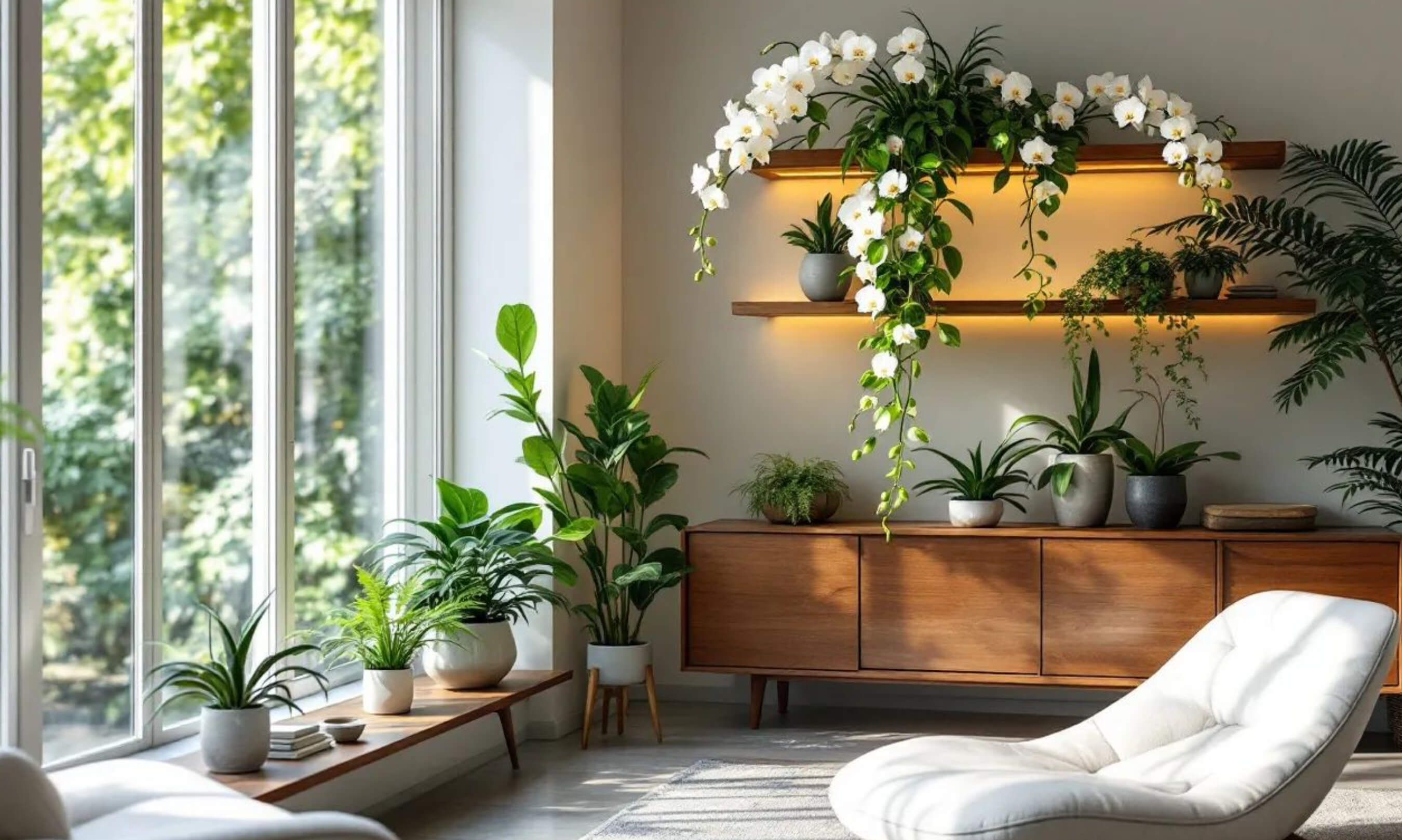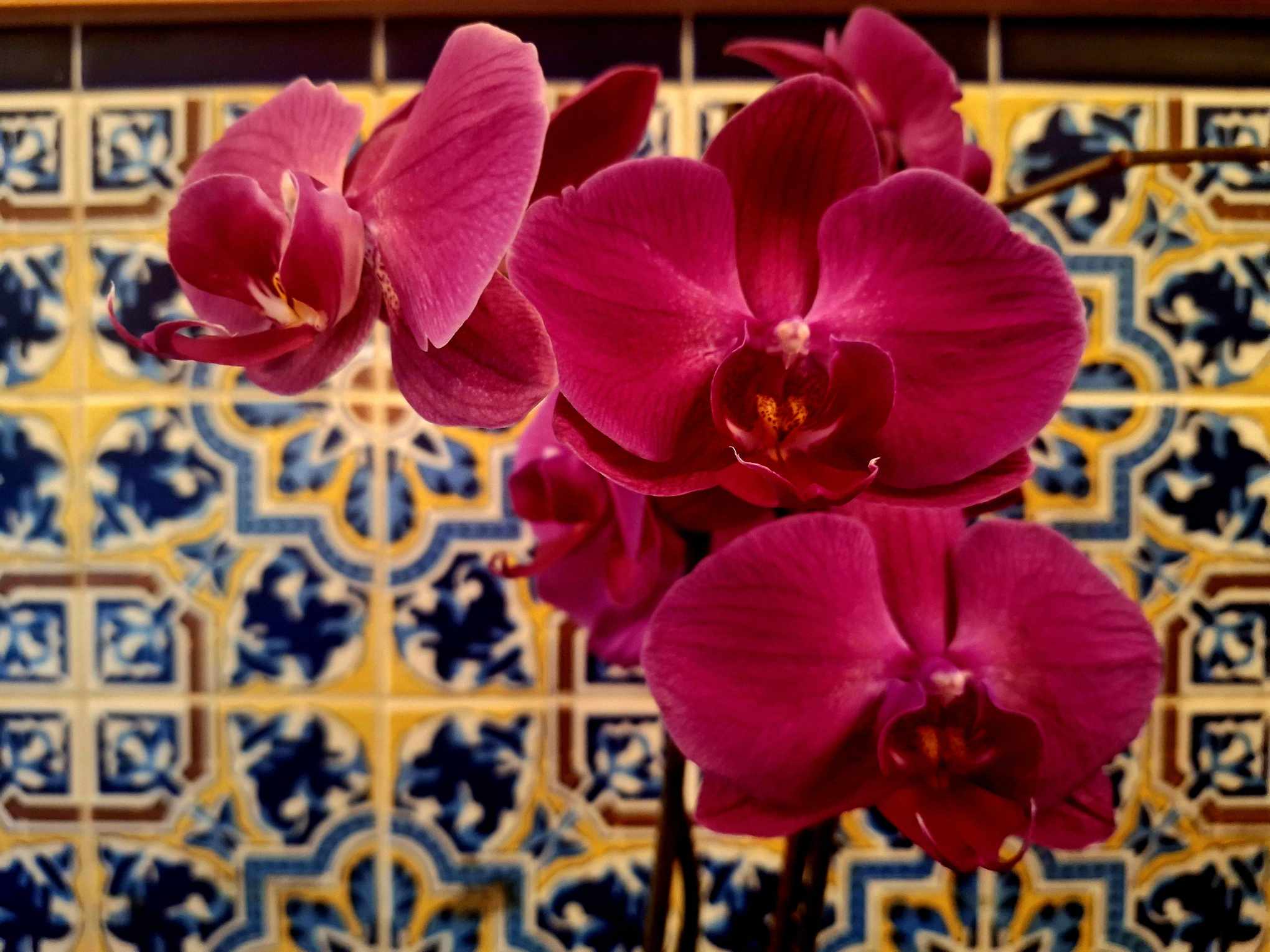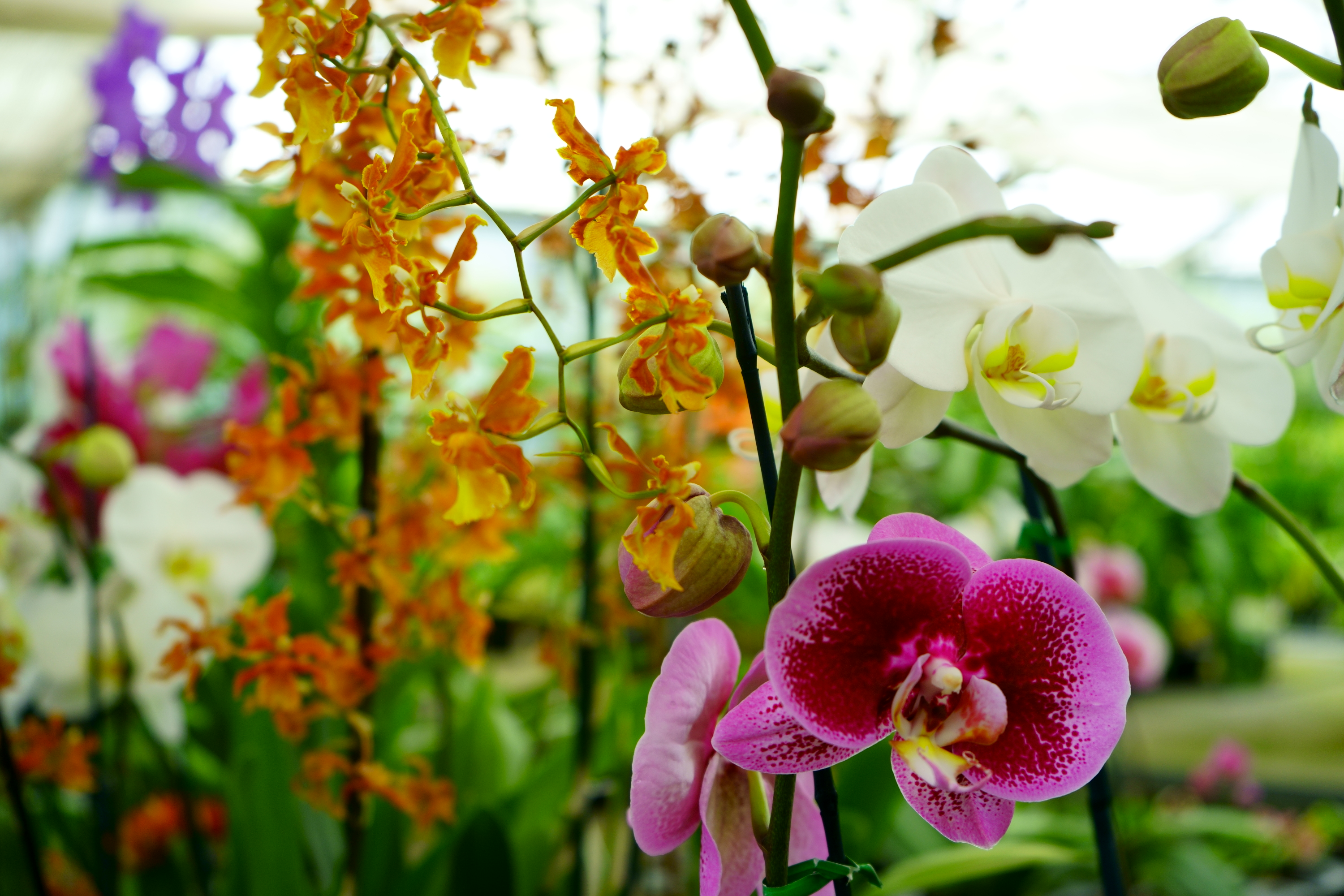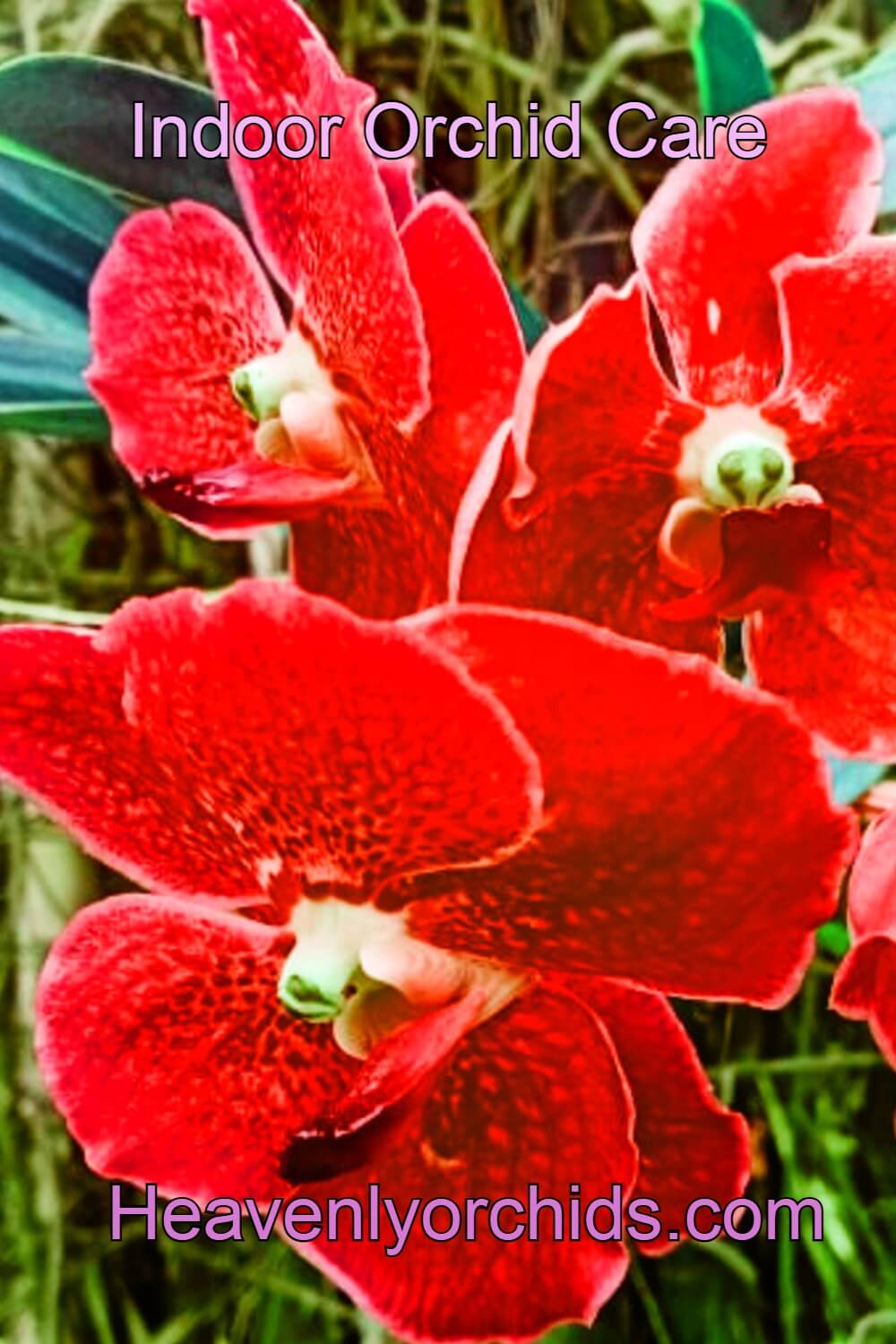Indoor Orchid Care
Orchids in nature, in their natural environment typically grow in tropical climates. Indoor orchid care, however, is required for orchids in every other part of the world. Orchids like warm temperatures and do best in climates between 70 and 85 degrees Fahrenheit (21 to 30 degrees Celsius). In areas with harsh winters, it is best to keep your orchids in a room where they are protected from cold draughts as they do not like sudden temperature drops. One caveat to this rule is that some orchids, particularly Phalaenopsis need to have the temperature drop at night into the mid 50's to low 60's Fahrenheit (13 to 16 degrees Celsius) in autumn in order to induce flowering. You can read more about how to get orchids to rebloom here.
Basics Of Indoor Orchid Care
If you are new to learning about growing and caring for orchids, there are a few basic requirements to learn about. Light, water, food (fertilizer), growing medium and temperature are the five core aspects to indoor orchid care. Orchids in cultivation are mainly epiphytes and lithophytes, sometimes known as air plants, and their care differs somewhat from most other types of plants that you may be familiar with. So, let's dive in and learn the most important aspects about growing orchids and how to avoid some of the common mistakes that beginners make.
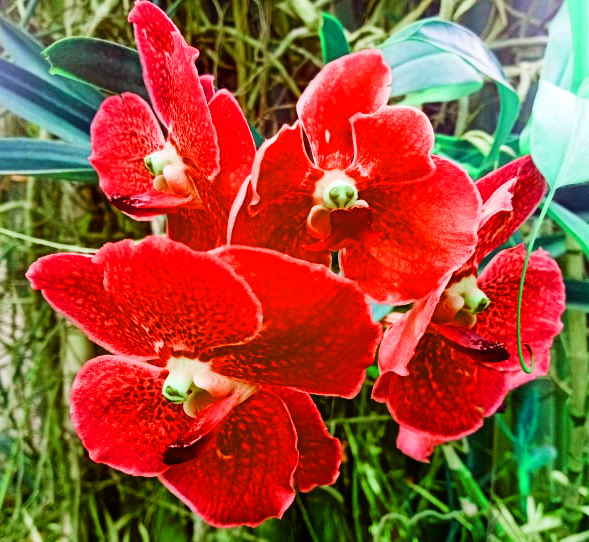
Indoor Orchid Care Light Requirements
Orchids are a bright shade loving plant for the most part. There are however many varieties and species of orchids, Brassias, most Cattleyas, Miltonias and Oncidiums like brighter indirect light conditions and Brassavolas, Dendrobiums, some Cattleyas and Vanda's like very bright light conditions. Phalaenopsis, which is probably the most popular type of orchid in cultivation, like fairly low light conditions and can thrive without the need for a lot of light. The one thing in common that all orchids require is to not subject them to direct hot sunlight. Orchid leaves will burn very easily when placed in an area where they will receive direct hot sunlight. Very early morning direct sun, when the temperature from the sun's rays are cool and not so intense or very late afternoon direct sun is fine for most orchids. When choosing a window location for your orchid, choose an east or south east facing window, or a window area that is protected by shade from a building, tree, or window shades. You can learn more about orchid light requirements and orchid light supplementation by following the navigation above or the links below.
Indoor Orchid Care-Growing Medium
People sometimes feel a little confused when first becoming familiar with orchids. Since most plants grow in soil, some new indoor orchid care takers assume that orchids need soil also. Except for terrestrial orchids, putting orchid roots in soil will most likely kill your plant. Orchids are mainly air plants and like lots of air flow around their roots, putting them in soil deprives them of oxygen and doesn't allow them to dry out. It is even more surprising for some new growers to learn that orchids can be grown without any growing medium at all. In their natural habitat, orchids use their roots to anchor themselves to tree branches and trunks. They are non parasitical and do not take any sustenance from their host tree. The roots take all their sustenance from rainwater which delivers moisture and food from the runoff of bird and animal droppings, decaying fruit and leaves, tannins and minerals from the tree bark. However in cultivation, growing mediums suitable for indoor orchid care, allowing for a lot of air circulation are used as an aid in the convenience of watering and as a means to support and prop up the orchid in a potting container. The main growing mediums that orchid growers use are fir and pine bark, sphagnum moss, and LECA (lightweight expanded clay aggregate) For the most part, when first learning to about how to grow orchids, fir and pine bark are the best mediums to learn with as they are more forgiving. One of the number one reasons for orchid growing failures is over watering, fir and pine bark allow for a lot of air circulation and drainage offsetting the chance of overwatering. Sphagnum moss is generally used to grow younger orchids with a less developed root system or water loving orchids as it retains more water than wood bark. Sometimes sphagnum moss and wood bark are used in combination with each other depending on the orchid's needs. LECA is generally used when growing orchids in self watering containers. You can read more about orchid growing mediums here.
Indoor Orchid Care-Watering
As mentioned above, one of the number one reasons for orchid growing failures is over watering. Watering is a little bit of a difficult area for beginning orchid growers. The reason for this is that there are many factors at play when determining how much to water your orchids and there is no one size fits all answer to cover the various factors such as local climactic conditions, species or variety of orchid, time of the year and so on. Determining how much and how often to water your orchid is something you will discover with experience. As you become more experienced as an orchid grower, you may like to try self watering semi hydroponic growing or water culture. if you are growing Phalaenopsis or Vanda orchids, one helpful method to determine if your orchid needs water is to look at the roots. When Vanda and Phalaenopsis roots are dry, they appear silvery gray and when they are saturated they turn a greener color. This is why many orchid growers place their orchids in a clear plastic or glass pot. Another benefit of housing your orchid in a clear container is that if you observe condensation on the inside of the container, it indicates that the growing medium still contains water and does not currently need to be watered. You can learn more about indoor orchid care water needs by following the navigation at the top of the page or by clicking here.
Indoor Orchid Care-Fertilizing
Orchids do best when fed minute quantities of food (fertilizer) on a weekly basis. There is a common saying among orchid growers and that is to feed your orchids weakly, weekly. Use a non urea based fertilizer made specifically for orchids. A fertilizer with a 20-20-20 N-P-K ratio is a good place to start. As with watering, different species of orchids have different nutrient requirements and there is no one size fits all instructions that applies to all orchids. At Heavenlyorchids.com we follow nature's way of feeding minute quantities of fertilizer, taking care to use the best quality water for our orchids, checking the Ph, the PPM(parts per million) dissolved solids and the amount of fertilizer we feed our orchids. If you would like to learn more about how we like to fertilize our orchids and the method that we recommend then visit our page here.
